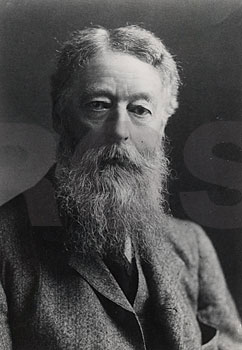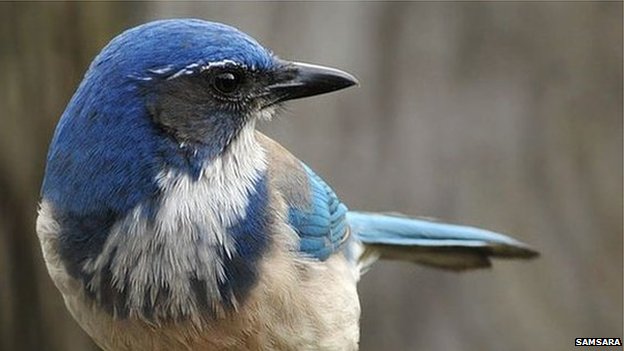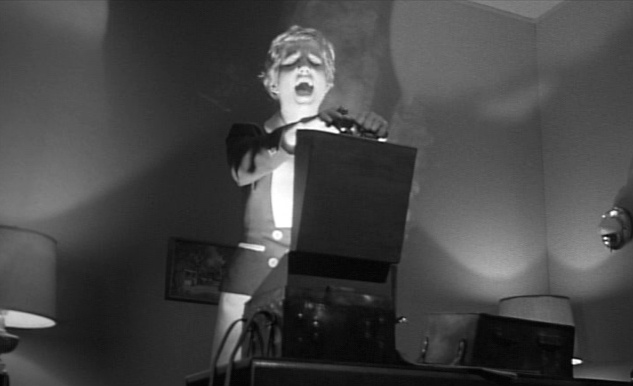News comes in that the entire western half of the United States has been shut down due to the presence in Los Angeles of a plague-infected squirrel. Something along those lines, anyway. While I do a spot of fact-checking to ensure I haven’t exaggerated the threat, it seems apposite to repost this piece from nine long years ago.
Dobson was afraid of squirrels. Here’s why. It was a damp and ruinous Thursday and he had not had any breakfast. He slapped his hand on the table and shouted “I must have marmalade! I must have some marmalade!” There was nobody to hear his complaint except for an ant which was making its way across the floor of his hovel, and the ant didn’t care, being an insect. Dobson had not even noticed the ant, in any case. He leapt out of his chair, put on his big reindeer-hide anorak brought back from one of his Arctic expeditions, and trudged outside, muttering now instead of shouting.
Have I ever told you there were several important trees on the path outside Dobson’s door? There was a sycamore and a yew, a larch and a pine. Dobson was fond of trees, usually, although he was unable to tell the difference between them. Gone were the days when he would festoon his hair with fallen leaves and twigs, inviting ridicule from the local whippersnappers. Dobson in the days of which I write had adopted a sober mien, indeed a gloomy one.
“Dobson, Dobson, don’t look so dismayed,” his acquaintances would say, to which the out of print pamphleteer’s response was to look heavenward, as if in great pain, adopting the air of an early Christian martyr, one lined up for some particularly bloodthirsty persecution. Dobson often skimmed through the pages of Foxe’s Book of Martyrs to pick up tips. But I digress.
On this damp marmaladeless morning, Dobson walked past the sycamore, the yew, the larch and the pine, onward past a repulsive ditch, past the post office and the pig huts and the vipers’ nest and the glue factory, up the lane towards the Big Unexplained Building On The Hill. The wind howled. It always did. Back in the hovel, the ant had vanished into a crevice in the wainscot, just as Dobson arrived at the gates of the Building. These gates were enormous and forbidding and strange and rusty and locked and bolted and unnecessary, for there was a wooden door set in the base and brickish wall which skirted the building, and it was only a few feet away to the left of the gates, or to the right, I cannot remember precisely, I have never been there myself, I am only reporting this as it was told to me by Marigold Chew on the day after Dobson’s death, after she had had her bath, and was sipping tea from an inelegant tin mug in the shabby parlour of a horrible hotel hard by the banks of the River Wretched in Sibodnedwabshire.
Dobson knew all about the wooden door, so why did he tarry by the strange rusty gates? Was he confused, was his mind a jumble due to lack of marmalade? Or did he have a tryst? We do not know. We do know that Dobson stood at those gates on that damp Thursday, peering intently through them, for a full quarter of an hour before turning around and heading off to Old Jack Blothead’s Foodstuffs Tent, where he bought a jar of marmalade and some pastry and a pot of some kind of edible paste which Old Jack Blothead had left unlabelled. The year was 1952. Dobson and the vendor of foodstuffs had their usual argument about the pamphleteer’s promissory note, a page torn from his notebook on which he had scrawled words to the effect that sooner or later he would do right by Old Jack Blothead, and if he did not then may the heavens smite him and may all his days be leavened with woe. It was advantageous for Dobson that Blothead was a man of great charity and puny intellect, and after a few minutes he left the tent through its great grimy flaps, armed with his jar and pot and a paper bag for the pastry. They would not fit in the single pocket of his anorak, so he carried them in his ungloved, unmittened hands.
What pangs led Dobson back to the strange enormous rusty gates of the Big Unexplained Building On The Hill? There was a fallen log, a log fallen from a trembling poplar, slap bang next to the gates, and Dobson sat on it and ate the pastry, and he stayed sitting there despite the fact that it began to rain heavily. He didn’t even bother to pull up the hood of his anorak, although that may be because it was rife with holes made by starving moths and his head would have got wet anyway. Wet, but surely not as wet as it did get, as he sat on the poplar log in the downpour eating pastry with his pot of paste and marmalade jar beside him outside the forbidding and strange and rusty and locked and bolted gates of the Big Unexplained Building On The Hill on that Thursday morning in 1952 when he first became terrified of squirrels.
“Why,” I asked Marigold Chew as she sipped her tea in the shabby hotel parlour, “Why did Dobson become so fearful of squirrels on that particular day?” She glanced at me briefly, and I was disconcerted by the weird look in her eyes. “Those bushy tails….” she began, then fell silent, turning to stare out of the window. I followed her gaze, and saw the gravedigger walking across the lawn, toting his spade jauntily over his shoulder. “Those bushy, bushy tails…” Marigold Chew repeated. She drank the rest of her tea, put the mug down on the floor by her feet, and stood up. “I must go and have a few words with the gravedigger,” she said, and swept out of the room as breezily as a bereaved woman on crutches can sweep breezily from a hotel parlour on the day after the death of her one true friend on this magnificent and baffling planet.




